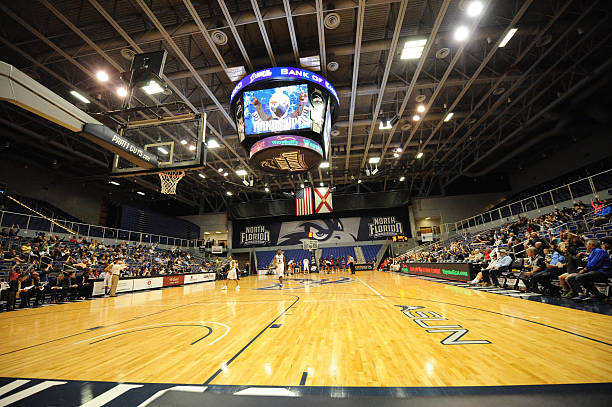For student-athletes seeking a balance between competitive sports and academics, NAIA scholarships offer a fantastic opportunity. The National Association of Intercollegiate Athletics (NAIA) is a governing body for small colleges and universities in the United States and Canada. Unlike the NCAA, the NAIA provides a more personalized experience for student-athletes, with a strong emphasis on character development and academic success. This article explores everything you need to know about NAIA scholarships, including eligibility, the application process, and tips for securing these awards.
What Are NAIA Scholarships?
NAIA scholarships are financial awards given to student-athletes who demonstrate exceptional talent in their sport and a commitment to academic excellence. These scholarships are offered by NAIA-member schools and can cover tuition, room and board, books, and other educational expenses. The NAIA itself does not award scholarships directly; instead, individual institutions distribute them based on athletic ability, academic performance, and character.
The NAIA is known for its smaller schools and close-knit communities, making it an ideal choice for student-athletes who want a more personalized college experience. The organization also emphasizes the Five Core Values: integrity, respect, responsibility, sportsmanship, and servant leadership.
Eligibility Requirements
To qualify for an NAIA scholarship, student-athletes must meet specific academic and athletic criteria. Here’s a breakdown of the key requirements:
- Academic Eligibility
- Graduation: Students must graduate from high school or complete their GED.
- Test Scores: A minimum ACT score of 18 or SAT score of 970 (combined math and verbal) is required.
- GPA: A minimum high school GPA of 2.0 on a 4.0 scale is required.
- Class Rank: Students must graduate in the top half of their high school class.
- Athletic Eligibility
- Students must demonstrate exceptional skill in their sport. Coaches evaluate athletes based on performance, potential, and fit for their program.
- Athletes must register with the NAIA Eligibility Center and provide transcripts, test scores, and proof of amateurism.
- Amateurism
- The NAIA requires student-athletes to maintain their amateur status. This means they cannot have accepted payment for playing their sport or signed a professional contract.
Sports Covered by NAIA Scholarships
The NAIA offers scholarships for a wide range of sports, including:
- Men’s Sports: Basketball, football, soccer, baseball, track and field, cross country, wrestling, and more.
- Women’s Sports: Basketball, volleyball, soccer, softball, track and field, cross country, and more.
The NAIA also supports emerging sports like esports, bowling, and competitive cheerleading.
How to Apply for NAIA Scholarships
Securing an NAIA scholarship requires careful planning and preparation. Here’s a step-by-step guide:
- Start Early
- Begin preparing as early as your freshman or sophomore year of high school. Focus on maintaining a strong GPA and excelling in your sport.
- Register with the NAIA Eligibility Center
- Create an account on the NAIA Eligibility Center website and complete your profile. Submit your transcripts, test scores, and proof of amateurism.
- Build a Sports Resume
- Highlight your athletic achievements, including stats, awards, and accolades. Include videos of your performances to showcase your skills.
- Contact College Coaches
- Reach out to coaches at NAIA schools you’re interested in. Attend camps, showcases, and tournaments where coaches may be scouting talent.
- Apply to Schools
- Apply to NAIA colleges that offer your sport and align with your academic and athletic goals. Ensure you meet their admission requirements.
- Sign a Letter of Intent
- If offered a scholarship, you’ll sign a letter of intent, which is a binding agreement to attend the school and participate in their athletic program.
Tips for Securing an NAIA Scholarship
- Focus on Academics
- Strong academic performance increases your chances of receiving a scholarship. Aim for a high GPA and competitive test scores.
- Showcase Your Talent
- Participate in high-profile tournaments and events where college coaches are likely to be present. Create highlight videos to share with coaches.
- Be Proactive
- Don’t wait for coaches to find you. Reach out to them with your resume, videos, and a personalized message.
- Consider Smaller Schools
- NAIA schools are often smaller and more intimate, providing a supportive environment for student-athletes.
- Stay Committed
- The process can be competitive and time-consuming. Stay focused on your goals and keep improving both on and off the field.
Benefits of NAIA Scholarships
- Financial Support
- Scholarships can significantly reduce the cost of college, making higher education more accessible.
- Personalized Experience
- Smaller class sizes and close-knit communities allow for more individualized attention from professors and coaches.
- Character Development
- The NAIA’s emphasis on core values helps student-athletes develop integrity, respect, and leadership skills.
- Exposure and Opportunities
- Playing at the collegiate level can open doors to professional sports careers or other opportunities in the sports industry.
- Flexibility
- The NAIA allows student-athletes to balance academics and athletics more effectively than larger organizations.
Challenges to Consider
- Limited Resources
- NAIA schools may have fewer resources and facilities compared to NCAA Division I programs.
- Less Exposure
- NAIA sports may receive less media coverage, which can impact visibility for professional opportunities.
- Time Commitment
- Balancing academics and athletics can be demanding. Student-athletes must manage their time effectively.
Conclusion
NAIA scholarships provide a unique opportunity for student-athletes to pursue their passion for sports while earning a college degree. By meeting academic and athletic requirements, staying proactive, and showcasing their talent, aspiring athletes can increase their chances of securing these prestigious awards. Whether you dream of playing at a smaller school or simply want to continue your athletic journey, NAIA scholarships can help turn your goals into reality.
